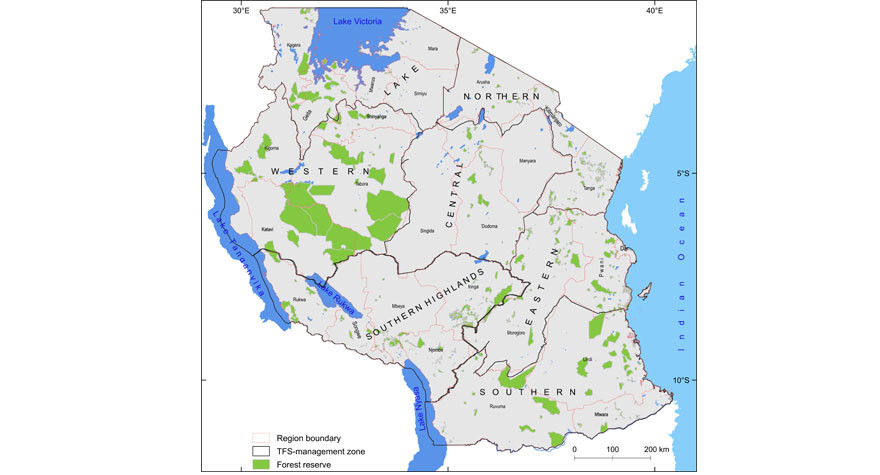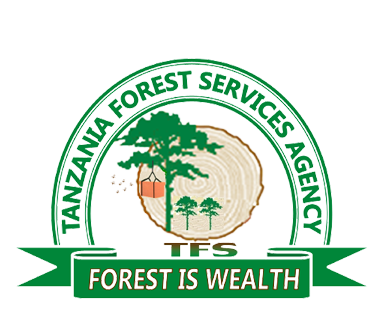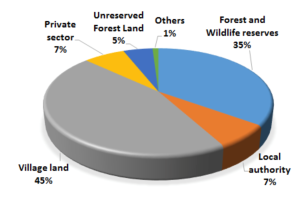Natural Forests
Tanzania is endowed with a tremendous diversity of forests, with an estimated 48.1 million ha of forests, representing 55% of the total country land area (88.3 million ha), placing among the top 36 global biodiversity hot spots. Natural forests contain over 10,000 plant species, hundreds of which are endemic and about 2,261 plant species endangered, whereby 1,456 species are likely threatened and 805 species are potentially threatened.
Natural forests include woodlands categorized as closed and open and forests classified as montane in mountainous areas, and lowland, and mangrove forests along the coast of the Indian Ocean. The spatial distribution of forests and woodlands exhibits variation, with woodlands encompassing approximately 50.6% of the total land area, forests accounting for roughly 3.5%, and the remaining 45.9% being covered by various types of land covers
Estimated Forest cover in forest reserve
Tanzania has shown a real commitment to conservation with about 45% (~21 million ha) of total forest cover (48.1 million ha) is under protection including National Forest Reserve and wildlife-protected areas, while production forests where regulated harvesting is legally allowed take up 20.1 million ha (41.8%). Therefore, Tanzania has the 8th largest area of forest cover in protected areas globally and the 2nd highest area in Africa.
TFS manages 465 forest reserves of different types with a total of 14.5 million hectares, 25 Nature Forest Reserves made of 42 forest reserves with 962,500.64 ha that are mostly covered with montane forests, which act as “water towers” for downstream areas by releasing water slowly, maintaining river flows, and reducing the risk of flooding. Similarly, efforts in restoration include 111,712 ha of ongoing planting in the 24 plantations made up of 63 forest reserves. Likewise, there are 18 bee reserves with a total of 35,918.28 hectares that provide alternative livelihoods to the local communities that minimizes dependence on forest resources and 71 tree seed sources with 689.5 ha for both native and exotic species friendly to water sources and soil fertility;
Map showing National forest reserve

Forest potential for Carbon
The country has an estimated total carbon stored by forests of about 5.8 Gigatons of CO2e. Thus, the forests are estimated a net sink of CO2 of about -0.3 Gigatons CO2 eq per year. Forest land is the major sub-sector in removing CO2. However, the capacity of forests ecosystems in carbon sequestration varies across landscapes. For example, the growing blue carbon ecosystems from mangrove forest covering about 158,000 ha and the estimated carbon stock are about 78.86 t C per ha. Consequently, the estimated annual carbon sequestration from mangrove forest is about −2,747,535.3 tons CO2 equivalent per year. Therefore, there is high potential of forest carbon stock in Tanzania that requires protection and conservation.
Forest CO2 emission
Forest cover change at the expense of deforestation is still occurring at a high rate of about 469,420 ha/year. This is resulting in significant GHG emission (43.7 mill tons of CO2 e/year) where most of forest conversion is taking place in village land. The loss of forest cover has had a profound effect on the ecosystem, biodiversity, economy, and the livelihoods of local communities. This has also impacted biodiversity as the depletion of natural habitats caused by deforestation has endangered numerous species, making them more susceptible to extinction. The depletion of trees has played a role in climate change, resulting in many economic ramifications such as diminished agricultural output, heightened health risks, and infrastructure impairment.



